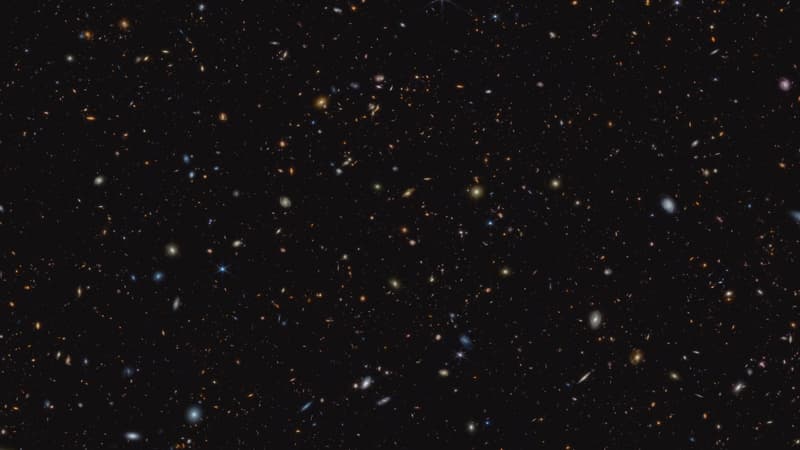A new infrared image from the James Webb Space Telescope reveals more than 45,000 galaxies, NASA announced Monday. The image is impressive, but above all it allows us to learn more about “what we know about galaxies in the early universe”, underlines NASA.
More than 45,000 galaxies
“This infrared image shows part of an area of the sky known as ‘GOODS-South’ (…) More than 45,000 galaxies are visible there,” explains the European Space Agency (ESA) on its website.
The Deep and Advanced Extragalactic Survey (JADES) program, which aims to devote “approximately 32 days of James Webb Space Telescope time” to the discovery and characterization of faint, distant galaxies, has already led to the discovery of “hundreds of galaxies that existed when the universe was less than 600 million years old,” NASA says on its website.
“The team has also identified galaxies that are filled with a multitude of hot, young stars,” says NASA.
Learn about the history of the Universe.
Marcia Rieke, from the University of Arizona in Tucson and co-director of the JADES program, explains that her goal is to understand “how the first galaxies (got) together,” or “how quickly they formed from stars.”
For “hundreds of millions of years” after the Big Bang, “the universe was filled with a gaseous fog that made it opaque to energetic light,” recalls NASA. A billion years later, this fog has lifted, giving way to a “transparent” universe, what scientists call the “reionization process.” This important period for science is studied in the JADES program.
Scientists are particularly interested in the formation of stars by galaxies and are looking for “signatures of star formation”. Ryan Endsley of the University of Texas at Austin, quoted by NASA, explains that “almost all the galaxies we found show these signatures (…) indicating intense and recent star formation.”
According to him, “the first galaxies were very good at creating hot and massive stars.” The latter emitted, according to NASA, “torrents of ultraviolet light”, which transformed the surrounding gas “from opaque to transparent by ionizing the atoms”. Therefore, scientists believe that it may have been “the prime mover” of reionization.
Number of galaxies observed beyond expectations
The scientists were also able to discover different periods of activity, with periods of rapid star formation interspersed with “calm periods,” NASA says. The calm may have come “when galaxies captured clumps of gaseous raw materials needed for star formation.”
The JADES program has made it possible to discover a large number of galaxies, the number of which “far exceeds forecasts”, according to NASA, which also praises the “exceptional resolution and sensitivity of the observatory”, which offers astronomers the “best view ever distant galaxies had been discovered and analyzed.
“Previously, the first galaxies we were able to observe looked like small dots. However, these dots represent millions, even billions of stars at the beginning of the universe,” according to Kevin Hainline of the University of Arizona in Tucson, quoted by NASA.
Source: BFM TV


